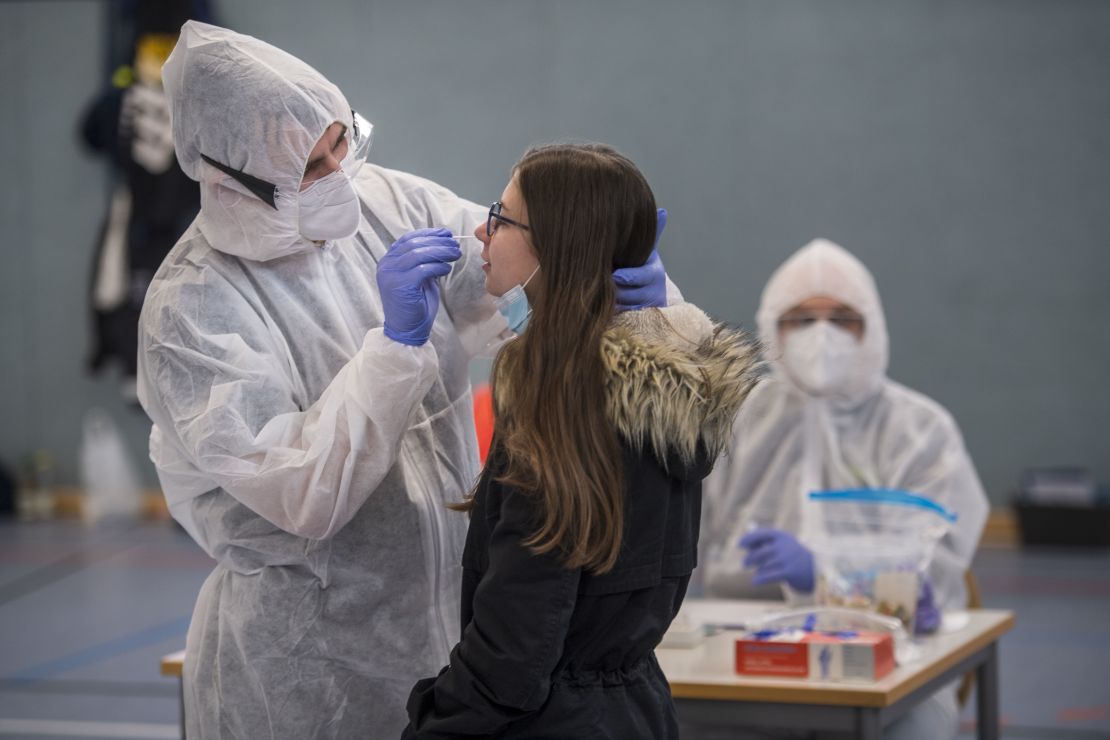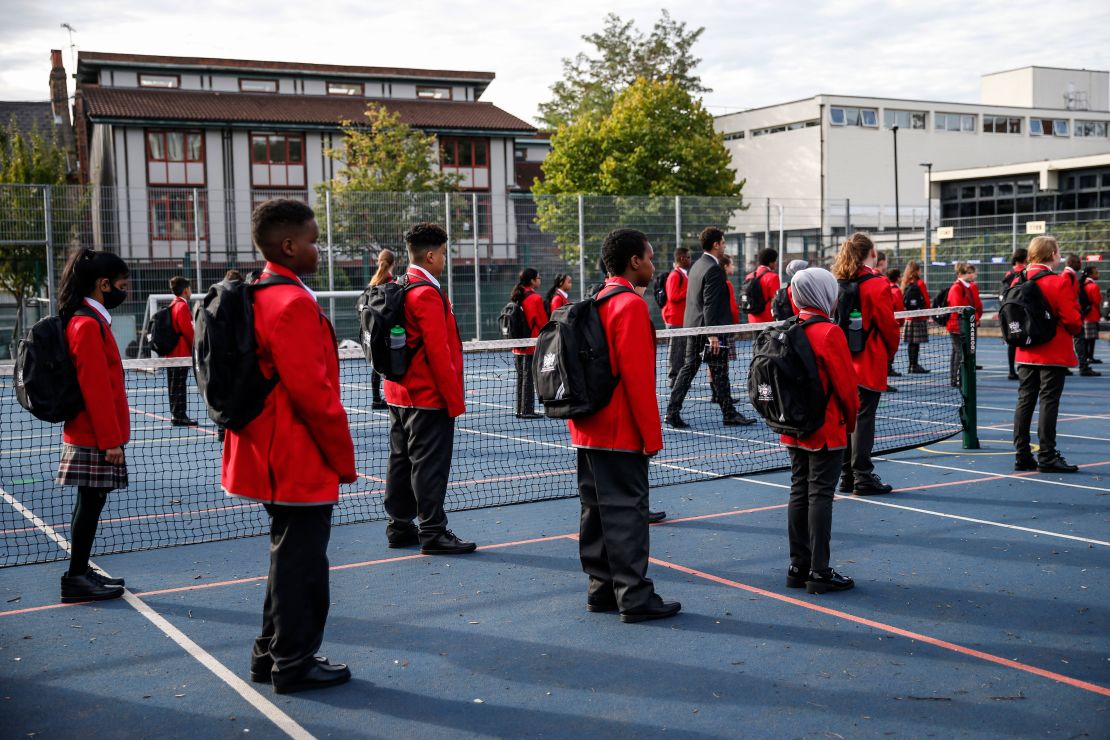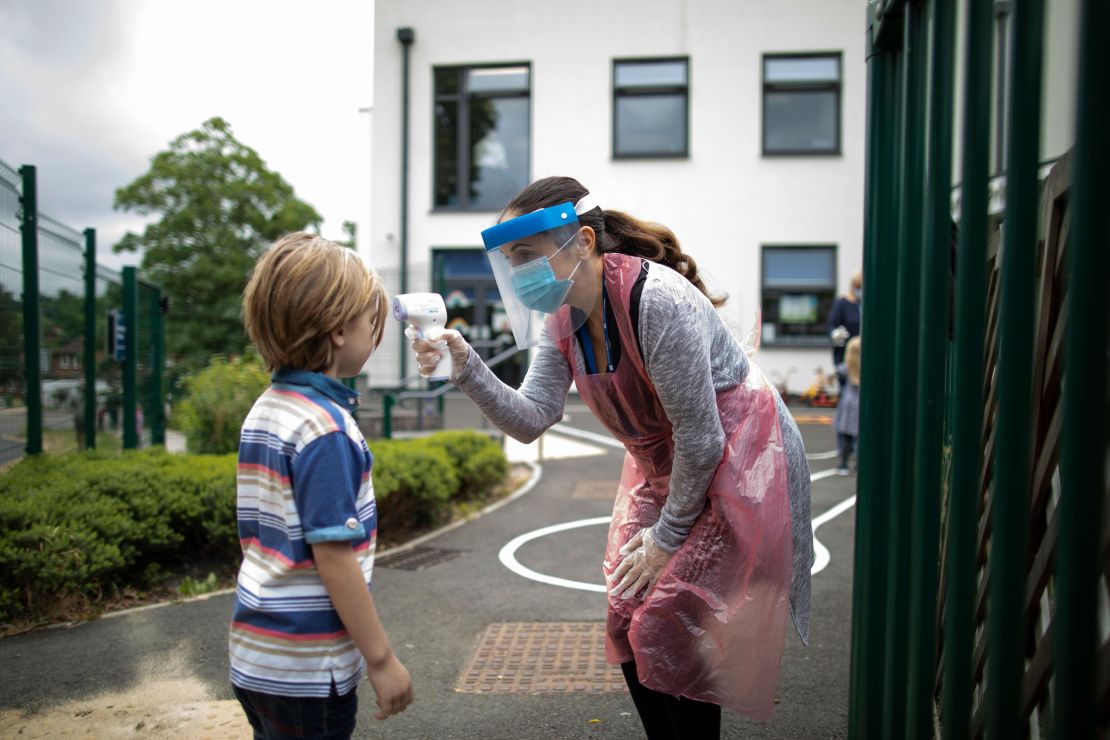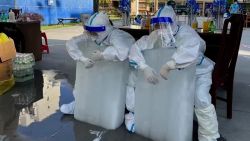The coronavirus pandemic transformed the working and social lives of millions of European adults in 2020. Children too have suffered immensely, with months of confinement only giving way to some sense of normality when schools in most countries reopened in the summer and autumn.
Now even that is under threat. Students in the UK were due to return from the Christmas break on Monday. But less than a week ago, the government announced the return to school would be delayed by two weeks for almost all high schoolers and some primary (elementary) school children. Learning will move online. On Sunday, Prime Minister Boris Johnson conceded schools may need to close indefinitely.
In Germany, schools switched back to remote learning in mid-December as infection numbers soared, with a decision on the way forward due on Monday. And in Ireland and Spain, teachers’ unions and some local leaders are calling on federal governments to delay the return to school too.

UK cases are rising rapidly, forcing millions of people into new lockdowns. School-aged children are being infected at a higher rate than before, and scientists worry a new variant of the virus, which is more easily transmitted, is helping drive the reinvigorated spread.
And that variant has already been found in at least 15 other European nations, including Sweden, France, Spain and Switzerland. It has also been identified in at least 14 outside the region, including the US, China and Australia.
A two-week delay to returning to school may seem insignificant to Americans in cities where schools were shut before bars, restaurants and gyms. But in Europe, shutting schools is widely seen as a last resort.
European governments have leaned on studies that suggest schools do not play a major role in the transmission of Covid-19 in communities to justify keeping them open. Children have typically been at lower risk of infection and of becoming severely ill from the virus.
But some of these dynamics may be changing. In the earlier stages of the pandemic, data showed significantly lower infection rates in children than adults. Now, in the UK, high school-aged children are the age group with the highest rate of infection. Child deaths, however, remain extremely rare.
Dr. Shamez Ladhani, an epidemiologist leading a survey of infections in England’s schools, told reporters in mid-December that the rising infection rates in English schools generally reflected the rates of their communities. That may support the idea that schools still aren’t driving infections in the community.

The survey isn’t conclusive, but Ladhani says his team isn’t finding much evidence of transmission between students in close contact.
“There’s not many outbreaks where six children in the same bubble, for example, all get infected in a timeline where you think that they passed it on to each other,” Ladhani said.
Government guidance recommends English schools form “bubbles,” or groups, for their pupils to limit the number of contacts students have with one another.
“We know that there is infection happening in school-age children. What we don’t know is the dynamics of that infection, whether it is occurring in school, or outside schools or at home,” the epidemiologist said.
Scientists are studying whether school children may be more likely to spread the new Covid-19 variant than previous ones.
To close or not to close?
Some teachers and medical experts in the UK are arguing that school closures are not just the result of the new variant but the government’s failure to get ahead of the virus and to make schools safe enough to weather it. On Sunday, PM Johnson told the BBC there was “no doubt in my mind that schools are safe.” He added that children faced a “very, very low” risk, compared to the benefit of attending school that was “so huge.”
Education Secretary Gavin Williamson said in parliament on Wednesday that the government had a rigorous plan to improve safety in schools, and that the two-week delay would give them time to implement mass Covid-19 testing for students and staff – a new regime that will be supported by the UK military.
“This kind of mass testing will help protect not just children and young people, it will benefit everyone in the community because it will break the chains of transmission that are making infection rates shoot up. This in turn will make it safer for more children to physically return to school,” Williamson said.

But lawmakers, including the opposition’s shadow education secretary, Kate Green, raised doubts over whether the government would be ready to roll the program out in every school in just two weeks. Teachers’ unions have called it “undeliverable.”
“This delay and disruption to children’s education is a direct result of the government’s failure. They’ve lost control of the virus. Now they’re losing control of children’s education,” Green said.
There is skepticism of the UK government’s ability to quickly implement mass-testing programs after its £22 billion ($30 billion) test, trace and isolate program was late to launch last year and was criticized by government scientific advisers as having only a “marginal” impact. The advisers said too few people were being tested, that results were turned around too slowly and people were breaking rules to isolate, with little monitoring or enforcement in place.
Independent SAGE – a group of experts established as an alternative to the government’s official scientific advisers, known as SAGE – said in a recent paper that it was more important now than ever to improve the track and trace program to keep infections down and, therefore, schools open.
It warned that there was too much expectation that vaccines, being administered now in the UK and much of Europe, would mean a return to normalcy right away.
“This is not the magic bullet. We are in a very serious situation,” said the group’s chair, David King, a former scientific adviser to the government.
In a discussion on Wednesday last week, he warned that herd immunity through vaccination may only be reached by around the end of the year. That too is only if enough people choose to be immunized.
In a paper, Independent SAGE calls for improvements in safety regulations in schools. It points out that current rules say an entire high school year group of up to 240 people could be considered a “bubble,” recommending much lower limits to the number of contacts students have. In elementary school, it recommends bubbles of three or four children.
It also calls for resources to improve ventilation, to reduce class sizes and to encourage more blended or hybrid learning, where students can study remotely for part of the term to reduce the number of people on site at any given time.
It’s a sentiment shared by many teachers, including one from England’s Midlands who spoke to CNN on condition of anonymity. Suffering from long Covid himself – with chest pains and constant feelings of fatigue – he says he and his colleagues felt the government had “thrown us under the bus.”
“The problems also come from governments not funding schools appropriately over many years,” he said, describing his school building as having tight corridors that make one-way systems impossible, and packed classrooms with poor ventilation.
“You can have 2,000 people in a building, or 30 people in one enclosed classroom. You can’t just rely on opening a window.”
Some teachers, however, are troubled by school closures and fear the two-week delay may be extended.
David Perks, the principal of the East London Science School, said he wanted his school to reopen as soon as possible, having seen the challenges online learning presented during England’s first lockdown.
“Since then, we have kept open and want to stay open,” he told CNN, even though he himself and many of his colleagues contracted Covid-19 last year. He said that while infection rates were high, he wasn’t seeing a lot of teachers or students in his school getting seriously ill.
“It is much more important we stay open for the pupils. If we fail to keep going in the New Year, the entire examination system is in doubt and the future the pupils are working for suddenly becomes in doubt,” he said.
“Children only achieve their best as they race towards the finishing line of examinations. If that is taken away from them, they can’t push themselves. They will lose faith in the system and fall back.”
‘It was boring to be glued to a screen’
Seventh-grader Andaru Jensen has been worried about the same thing. His final school exams were scrapped last year, which he regrets.
“I think at some points I get a bit scared when I feel like I’ve lost some of the things I learned. I can’t remember everything I learned and I think, ‘Am I slumping? Am I not as good in class as I used to be?’” he said.
He doesn’t mind studying from home for another two weeks – especially as he’ll get an extra hour of sleep – but he doesn’t want to learn online for too long.
“After the first week in the last lockdown, it was really hard to keep myself motivated. It was boring to be glued to a screen for that many hours, doing the same thing over and over again.”

He said he wasn’t too worried about Covid-19. He understands there’s a risk he could get it, but he knows he’s in a low-risk group and would rather be at school than missing out on in-person education and seeing his friends.
But many parents are feeling anxious, some about the potential risk of infection, or conversely about the strain of having to balance hours of childcare while working.
Alan Tilmouth, who has 13-year-old twins in school in the northern English county of Northumberland, is one such parent, who says the government’s safety regulations for schools were “poor, ineffective or non-existent.”
But ask parents in Italy, who dealt with on-again-off-again schooling throughout 2020, and many will say they are desperate for their kids to have that same sense of normality that many in other parts of Europe have had.
Italy is trying to start a staggered reopening of schools next week, but there is nervousness that infections will rise and schools may close again.
“In general, I believe that we unfairly made kids – and even more, teenagers – pay the highest price for a disease that basically doesn’t affect them,” said Mario Fusco, a 46-year-old software developer in Lombardy. He and his wife spent months home schooling their 9-year-old daughter last year.
“Every morning at around 8 a.m., I walk my dog before starting to work and I see 80-year-old people entering the subway station close to my place, while [the government has been] forbidding boys and girls to go to school. The first thing we did here in Lombardy back in February was close schools,” he said.
“Italy is not a country for young people.”
CNN’s Mick Krever and journalists Nicola Ruotolo and Benjamin Berteau contributed to this report.



















